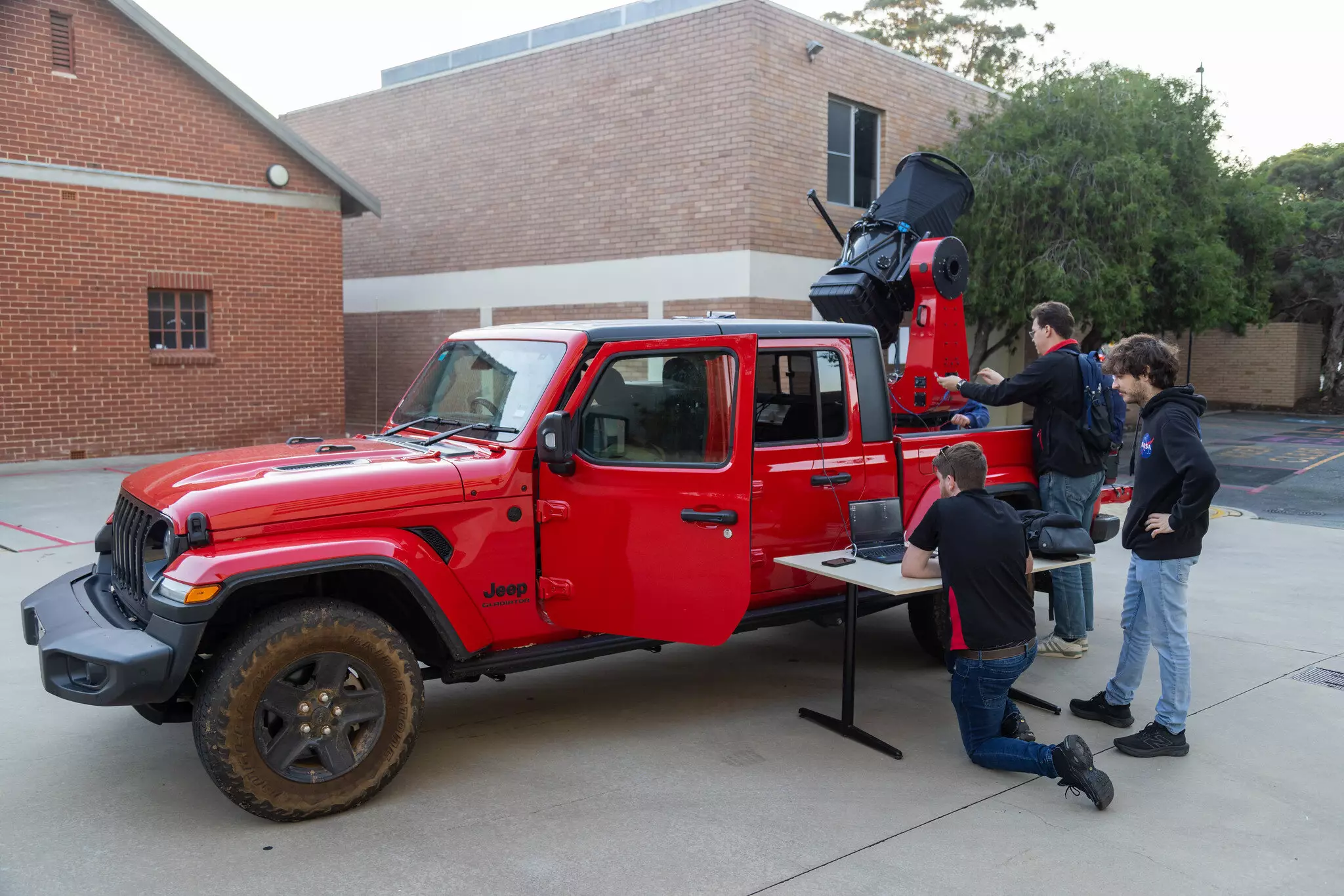The University of Western Australia’s TeraNet project has achieved a significant milestone in the field of space communications. By successfully receiving laser signals from a German satellite in low Earth orbit, the team has opened the doors to a new era of high-speed communication between space and Earth. This breakthrough marks a 1,000-fold increase in communication bandwidth, offering promising prospects for the future of space technology.
Unlike traditional wireless radio signals, TeraNet’s ground stations utilize laser technology to transfer data between satellites in space and users on Earth. With the capability to transfer data at thousands of gigabits per second, lasers operate at higher frequencies than radio signals, allowing for more efficient data transmission. This advancement is crucial as the number of satellites in space continues to rise, creating a bottleneck in data retrieval back to Earth.
While laser communication offers immense benefits, it also presents challenges such as signal interruptions due to clouds and rain. To address this issue, the TeraNet team has strategically positioned three ground stations across Western Australia. This network ensures that if one station is affected by weather conditions, data can be rerouted to a location with clear skies. Additionally, the mobility of one ground station, built on a custom Jeep truck, allows for rapid deployment to areas in need of fast space communications.
The implications of high-speed laser communication are vast, with potential applications in Earth observation satellites, military communication networks, autonomous mining operations, and disaster planning and responses. By revolutionizing data transfer and enhancing security in various sectors, TeraNet’s technology is poised to transform the way we communicate and operate in space.
The TeraNet project is not only revolutionizing current space communications but also paving the way for future advancements in optical technologies. With plans to support international space missions and explore deep-space communication, quantum-secured communications, and optical positioning, TeraNet is at the forefront of innovation in the field of space technology. By expanding its network to include ground stations in strategic locations, the project is poised to lead the way in next-generation space communications.
The successful reception of laser signals from a German satellite by the University of Western Australia’s TeraNet project marks a monumental achievement in the realm of space communications. By harnessing the power of laser technology and overcoming challenges through strategic planning, TeraNet is set to revolutionize data transfer and secure communications in space. With exciting prospects for the future, the project is paving the way for a new era of high-speed space communications that will shape the future of space technology.


Leave a Reply